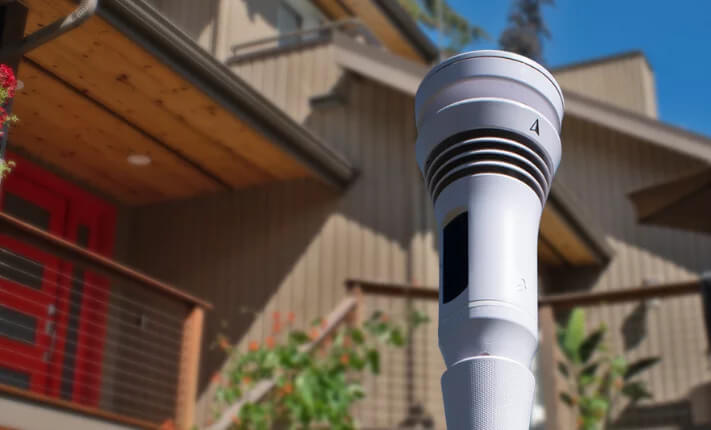
Have you ever noticed how different you feel in dry heat vs humid heat? The water vapor in the air helps explain why an 80-degree day in Phoenix doesn’t feel the same as in Miami.
There’s no denying the summer heat feels different depending on where you’re located. Humidity (or the lack thereof) plays an important factor in how comfortable you feel in hot weather, which we’ll explore in further detail below.
- What Is Dry Heat?
- What Is Humid Heat?
- Humidity Vs Dry Heat: The Difference Between Dry Heat And Humid Heat
- Is Dry Heat Better Than Humid Heat?
The Tempest Weather System provides accurate, real-time weather data on humidity, temperature, and more so you can comfortably plan for the day ahead.
What Is Dry Heat?
Dry heat refers to outdoor conditions in areas with high temperatures and low humidity. It generally occurs in hot desert climates that receive little precipitation. The absence of moisture in the air allows water to evaporate more quickly, and temperatures may seem cooler than they would in a humid environment.
What Does Dry Heat Feel Like?
In dry heat, sweat evaporates faster, allowing the body to cool off faster. However, the quick evaporation of sweat can lead to dehydration if you’re not drinking enough water. Dry heat may also make breathing harder for certain people with respiratory conditions like asthma.
Use the Tempest WEATHERmeter to accurately measure temperature, humidity, and other weather data on the go.
What Is Humid Heat?
Humid heat describes the weather conditions when it’s hot with high humidity. When the humidity gauge shows high levels, temperatures seem hotter than they actually are, and the air appears “heavy.”
What Does Humid Heat Feel Like?
It’s common to feel damp and sticky in hot and humid heat, and you might get covered in sweat after a short period of time outside. The high moisture content in the air makes it more difficult for your body to cool down through sweat evaporation and is often associated with a place feeling muggy.
Try out this activity to see how hot air rises and cold air sinks and learn how this impacts weather patterns and temperature regulation in your home.
Humidity Vs Dry Heat: The Difference Between Dry Heat And Humid Heat
Dry and humid heat usually have the opposite effects on your body. You might feel your sweat more in humid climates, though it’s easier to get dehydrated in dry heat as the moisture quickly evaporates from your body.
On the other hand, dry heat feels less oppressive than humid heat, even at higher temperatures, as you can stay cool and dry more easily. However, it’s often easier for people to breathe in areas with humid heat, and your skin may feel more comfortable since it stays better hydrated in humid conditions.
Is Dry Heat Better Than Humid Heat?
Is there a “best” option between moist heat vs dry heat? In reality, the best type of heat largely comes down to personal preference. If you’ve lived in the Southeast for most of your life, you might prefer more humidity, while a person from the Southwest might be more accustomed to dry heat.
Both conditions have perks and drawbacks and are better suited to certain lifestyles. Prolonged exposure to heat in either condition can cause serious health risks, so stay hydrated and take cover in the shade to stay safe during a heat wave.
Measure Relative Temperature And Humidity Accurately In Your Area With The Tempest Weather System
There’s a long-standing debate between dry vs humid heat and which is better, though there’s an argument to be made for both sides.
Understanding your preferences will help you stay comfortable and safe all summer, and having the proper types of weather instruments, like the Tempest Weather System, allows you to lessen your reliance on inaccurate weather forecasts with precise, real-time readings of humidity and temperature in your area.
Visit the Tempest online shop to find accurate tools to measure humidity, temperature, and more to stay safe and comfortable.

